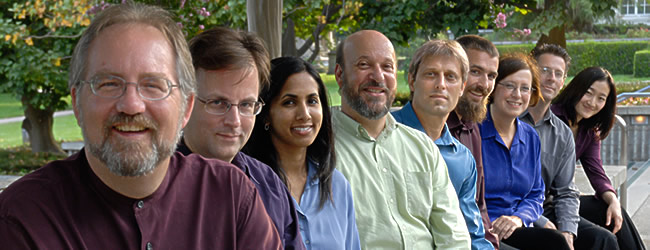8 Folk Song Arrangements & A Birthday Hansel,
op. 92
by BENJAMIN BRITTEN
The 8 Folk Song Arrangements are the last works Britten wrote for Peter Pears, his life long partner. A last look at the British Isles, the songs celebrate a sense of home and place worthy of a final goodbye. The two men were the most accomplished married couple in music’s history, for married they were despite any legal status of their time. These two compositions belong to a series of vocal works he wrote after suffering a serious heart attack in 1973. His illness left him unable to perform with Pears. Britten wisely turned to the harp and its brilliant player Osian Ellis. Britten was notorious for expecting the highest standards of professionalism from performers. Ellis was able to satisfy the composer’s need for perfection. Written at the flattering request of the Queen Mother for her 75th birthday in 1975, Britten’s last song cycle A Birthday Hansel set poems by Scotland’s Robert Burns. This continuous work is a garland of perfection benefiting a royal private performance at Sandringham. The temptation to hear Britten preparing the comfort of grief for Pears, his lover left on earth for a few more years, is palpable. In their ideal resonance of text and music, the angelic association of the harp makes these final works all the more poignant as a summing up of life’s experience.
L’Autunno, Musica per 5 Suonatori de
Strumento a Fiato
by HANS WERNER HENZE
L’autunno, musica per 5 suonatori di strumenti a fiato (or in English, Autumn, music for 5 players of wind instruments) is the complete title given by Hans Werner Henze to this major work celebrating a return to health. Like Britten before him in 1973, Henze suffered a life threatening heart attack in 1977. L’autunno was composed after this experience at his Tuscan hideaway in Montepulciano, an elegant villa called La Leprara. There is naturally a profound personal reflection in this composition, and like Mozart, the quintet is an opera without words. The title not only describes the season of autumn, but harvests the instrumentation of a normal wind quintet. In all, twelve instruments are used: piccolo, flute, alto flute, oboe, oboe d’amore, E-flat clarinet, clarinet, bass clarinet, French horn, Wagner tuba, bassoon and contrabassoon. The first movement features the oboe d’amore and alto flute, in a dense but very gentle texture. Feelings of calm Tuscan breezes resolve eventually into silence before a clarinet solo at the movement’s end. The second movement belongs to the Wagner tuba with Henze offering a very droll scene indeed. The third movement begins with a cadenza for the solo French horn, a brutal and short march leading to an accompanied horn solo marked Malincolia. The harmonic effects are very dense, but again gentle, as in the first movement. A bassoon cadenza reconnects to the mood of the second movement and leads into a wild circus scene worthy of Fellini, with cake walks and burlesques alternating with passionate lyrical phrases. The piccolo, e-flat clarinet and bass clarinet shine in this vibrant scene painting. As the operatic ruckus calms down, an extremely nostalgic passage for piccolo, clarinet and. horn leads to an extended cadenza for the contrabassoon, proceeding without break into the final movement. The fifth movement is inscribed Quia respexit humilitatem ancillæ suæ from the Gospel of St. Luke and features a direct quotation from Bach’s Magnificat. Symbolizing the breath of life, Henze brilliantly used wind instruments to celebrate his return to health after serious illness. After a solo introduction from of the lowest instrument of the ensemble and with Bach as his guide, Henze’s final movement of L’autunno magnifies the graciousness of answered prayer “because He hath regarded the humility of his handmaid.”
Mládí (Youth)
by LEOŠ JANÁCEK
Leoš Janácek, like Smetena and Dvorák, was a composer who worked indefatigably for the advancement of the music of his native Czechoslovakia, today the Czech Republic. Born in Hukvaldy, Moravia, on July 3, 1854, Janácek was educated at the Augustine monastery in Brno, and at the Prague, Leipzig, and Vienna Conservatories. In 1881, he was appointed director of the Brno Organ School, simultaneously assuming the conductorship of the Czech Philharmonic Orchestra. He was active as a composer throughout his long and distinguished career, producing some of his finest works during the last years of this life. He died at Morava-Ostrava on August 12, 1928. Mládí (Youth), Janácek’s delightful sextet for winds, was written in July 1924, when the composer was celebrating his 70th birthday. He was collecting memories of his youth for a biography being written about him, and his thoughts went back to his life at the Brno monastery. The work constitutes a musical reminiscence of Janácek’s day at the monastery. Janácek often made use of what he called “speech melody” —melody whose contours were inspired by the characteristic rhythm and cadence of the Czech language. In the jaunty first movement, which is in the form of a free rondo, the principal theme is said to have been derived from the speech melody of the sigh “Youth, golden youth.” The second movement is a theme with four free variations. The third movement is a scherzo with a perky piccolo tune taken from Janácek’s little March of the Blue Boys, who were boys at the monastery who sang and whistled as they marched along. The final movement recalls the principal theme of the first movement in combination with new material.
— Jeff von der Schmidt

